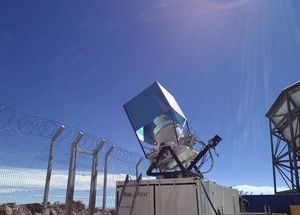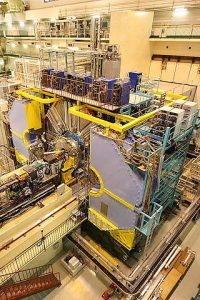Akito Research
Akito Kusaka @ Berkeley Lab
Introduction | Research
Why and how did our universe begin? How has it evolved? These are the key questions in my research. I have been exploring answers to these questions, first in the field of elementary particle physics, and now through observing the early universe. The following are some of the research projects I have participated and have made significant contributions.
Cosmic Microwave Background
Cosmic Microwave Background (CMB) is the light from the very beginning of the universe, more than 10 billion years ago. An explosion happened when the universe started (big bang). CMB is the afterglow of the explosion, and is still arriving on earth even now. By precisely measuring the CMB, we can learn how the universe began, why the explosion happened, and how the universe evolved. I conduct researches in the following projects.
Simons Observatory
Simons Observatory is a new collaboration formed in 2016 (press release by LBNL), aiming to pioneer the new era of CMB observation by combining state-of-the-art technology and cutting-edge data analysis. Our group at LBNL plays major roles in multiple fronts in this project, ranging from the design and development of instrumentation to the data analysis using one of the world-largest high-performance computation facilities at NERSC.
POLARBEAR and Simons Array
POLARBEAR and Simons Array are a series of instrument to eventually deploy more than 20,000 detectors at an altitude of 5190 m, on Cerro Toco in the Atacama Desert of northern Chile. POLARBEAR1 is currently observing, and we will deploy POLARBEAR2 and Simons Array soon. The program will explore the inflation and the dark content of the universe (dark matter, dark energy, and neutrinos) with unprecedented sensitivity.
Atacama B-mode Search (ABS)

ABS aims to precisely measure CMB polarization. ABS has deployed 240 polarimeters employing 480 transition-edge sensors (TES) bolometers observing at 150 GHz. ABS has been observing since 2012 at an altitude of 5190 m, on Cerro Toco in the Atacama Desert of northern Chile. ABS has unique features: a continuously rotating half wave plate providing fast and clean modulation, and systematically clean optics consisting of a cryogenic telescope.
Multimoded Survey Experiment (MuSE)
At Princeton, I initiated a research and development program for next generation instruments to use highly multimoded polarimeters for ground-based CMB polarization measurements. Multimoded detector systems can achieve equivalent sensitivity to the now-standard single-mode detectors with significantly fewer elements. This reduces the cost and complexity of an instrument. Thus, the multimoded architecture offers a complementary and cost-effective approach. Multimoded Survey Experiment (MuSE) is a proposal of a next generation instrument based on this concept.
Q/U Imaging ExperimenT (QUIET)
Q/U Imaging ExperimenT (QUIET) is a project for CMB polarization measurement operated from 2008 through 2010, at the Chajnantor plateau at 5080 m altitude in the Atacama Desert of northern Chile. It has receiver systems using high-mobility electron transistor (HEMT) amplifiers, sensitive to the frequencies of 95Ghz and 44GHz.

Elementary Particle Physics
An important unsolved problem in particle physics and cosmology is the lack of antimatter. In 1930s, particle physicists found antimatter – substance that has almost exactly the same property as the ordinary matter except for its charge (say the electric charge of plus and minus). Since then, particle physicists and cosmologists have been asking the following question: why all the antimatter disappeared from the universe, which had the equal amount of matter and antimatter at the very beginning of big bang?

The Belle experiment, consisting of Belle detector and KEKB accelerator, is one of the most advanced particle accelerator experiment in the world. It is also called a “B factory” as it creates a lot of particles called B and anti-B mesons, and observes the decays of the particles. By comparing the decay processes of B and anti-B particles, Belle experiment has precisely measured small differences between matter and antimatter. I have conducted research at Belle as a collaborator when I was a graduate student, and awarded Ph.D. for this research. Belle (together with its rivaling experiment BaBar) has made crucial contribution in establishing Kobayashi-Maskawa model, a model explaining the small difference between matter and antimatter. The achievement of Belle was acknowledged when Kobayashi and Maskawa were awarded Nobel Prize in 2008.
While I was a graduate student, I also worked on a development of large-aperture Hybrid Photon Detector (HPD) and designed its readout electronics. HPD consists of large photo-cathode and avalanche photo diode. It combines excellent performance (large sensitive area, good timing resolution, and a single-photon detection capability) and simple structure, which has a potential of lowering the cost. These are ideal characteristics for a photon sensor used in a next-generation water Cherenkov neutrino detector, such as Hyper Kamiokande. The next-generation neutrino detectors have a potential of probing the difference between neutrino and anti-neutrino, and may provide crucial insight in understanding the lack of antimatter in the universe.